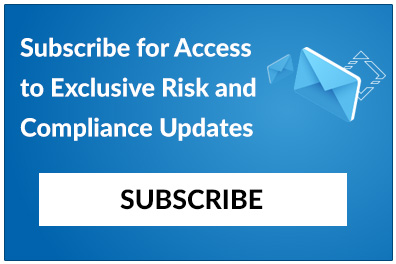Home/ Blog / Evaluate Your Management System for Compliance
Regulatory penalties reached $1.23 billion in the first half of 2025, according to Fenergo. This astounding 417% increase from 2024 proves more than ever why evaluating your management system for compliance is crucial.
It may seem as though looking into a more efficient compliance management system (CMS) is a big investment, but this is not nearly as costly as non-compliance can be. In fact, it is three times less expensive to simply maintain an effective CMS.
Unpacking CMS Architecture
A CMS is meant to connect business units to prevent, detect, and correct breaches in compliance. Regulatory guidance from the Office of the Comptroller of the Currency (OCC) states that an effective CMS consists of three pillars:
- board and management oversight
- a comprehensive compliance program
- an independent compliance audit function
A culture of compliance needs to be embedded within the organization for a CMS to fulfil its function. A strong oversight and a forward-looking strategy are key for financial institutions to actively, rather than reactively, manage compliance risk.

Conducting a Systematic Evaluation
To begin the management system for compliance evaluation process, financial institutions need to examine five key components. These include:
| Action | Details |
|---|---|
| Quarterly Board and Management Oversight | Track board engagement levels, establish clear accountability structures, and highlight compliance as a strategic priority. |
| Continuous CMS Evaluation | Measure policy update completion rates, procedure adherence rates, and program coverage across all products, services, and activities. |
| Monitoring and Testing | Conduct transaction testing using appropriate sampling methodologies on a monthly or quarterly basis, measuring control effectiveness rates and issue identification rates. |
| Risk Assessments | Identify potential compliance risks, assess them based on impact and likelihood, and implement appropriate controls to reduce them to acceptable levels. |
| Monitor KPIs | Critical KPIs to monitor include the compliance audit pass rate, finding closure rates, time to remediate critical findings, and control effectiveness percentages. |
| Training and Awareness | Provide role-based training content with measurable outcomes to ensure employees at all levels understand their compliance responsibilities |
Implementing a Management System: Compliance and AI
Integrating AI technology into your approach to compliance enables your organization to conduct automated evidence collection, streamline workflows, and continuously monitor regulatory changes.
According to Sprinto, around 40% of organizations’ compliance budgets are being invested in technology. However, there is good reason for this as these investments yield an approximately 600% ROI over a period of three years.
30 Day Action Plan
Before introducing AI-driven GRC technology company-wide, we recommend focusing on the following activities within the first 30 days:
- Compile a comprehensive readiness sheet (evaluate integration capability)
- Develop a communication strategy between business units
- Experiment with low-risk pilot projects to demonstrate value
It is also important to be weary of any possible mitigating factors to the uptake of GRC technology, such as data privacy, security, and employee resistance.
Measuring ROI
To truly measure the impact of this technology on your organization’s operations, your compliance team will need to outline baseline metrics.
Thanks to visual dashboards incorporated within leading AI risk and compliance technology like Predict360, different business units can monitor and share key data. Thanks to the easy deployment of this technology, the scalability of the technology is far beyond that of any manual processes.
Here are some key factors to consider when implementing a tool like Predict360:
| Factor | Description | Key Benefits |
|---|---|---|
| Cloud-Based Deployment | Cloud-based SaaS architecture for fast implementation. | Low upfront costs, minimal IT infrastructure requirements, scalable from basic to enterprise. |
| Regulatory Intelligence | Automates regulatory change tracking and maps requirements to controls. | Real-time regulatory updates filtered by jurisdiction/agency. |
| Integrated GRC Platform | Unified platform integrating risk management, compliance, audits, policies, training, and third-party risk. | Provides holistic risk visibility, connects regulatory requirements to policies/controls/training. |
| Content Libraries | Industry-specific starter templates. | Accelerates deployment, ensures industry best practices, reduces configuration time. |
| Workflows & Automation | Customizable workflows, approval processes, and compliance monitoring. | Improves operational efficiency and ensures consistent compliance execution. |
Get in touch with our team via this page to request a Predict360 or Ask Kaia demo.
Ultimately, implementing a management system for compliance that incorporates technology can transform your organization’s operations. Follow these recommendations and conduct your own testing to see the potential for your team.
Request a Demo
Complete the form below and our business team will be in touch to schedule a product demo.
By clicking ‘SUBMIT’ you agree to our Privacy Policy.


